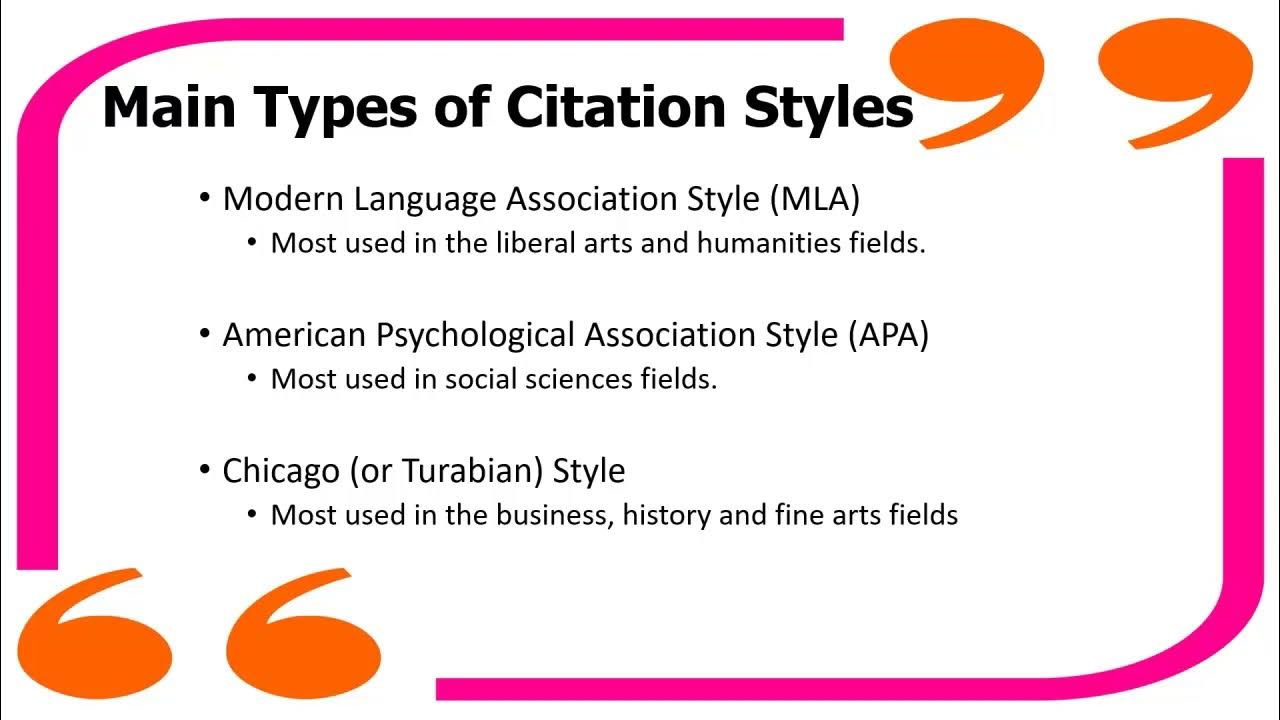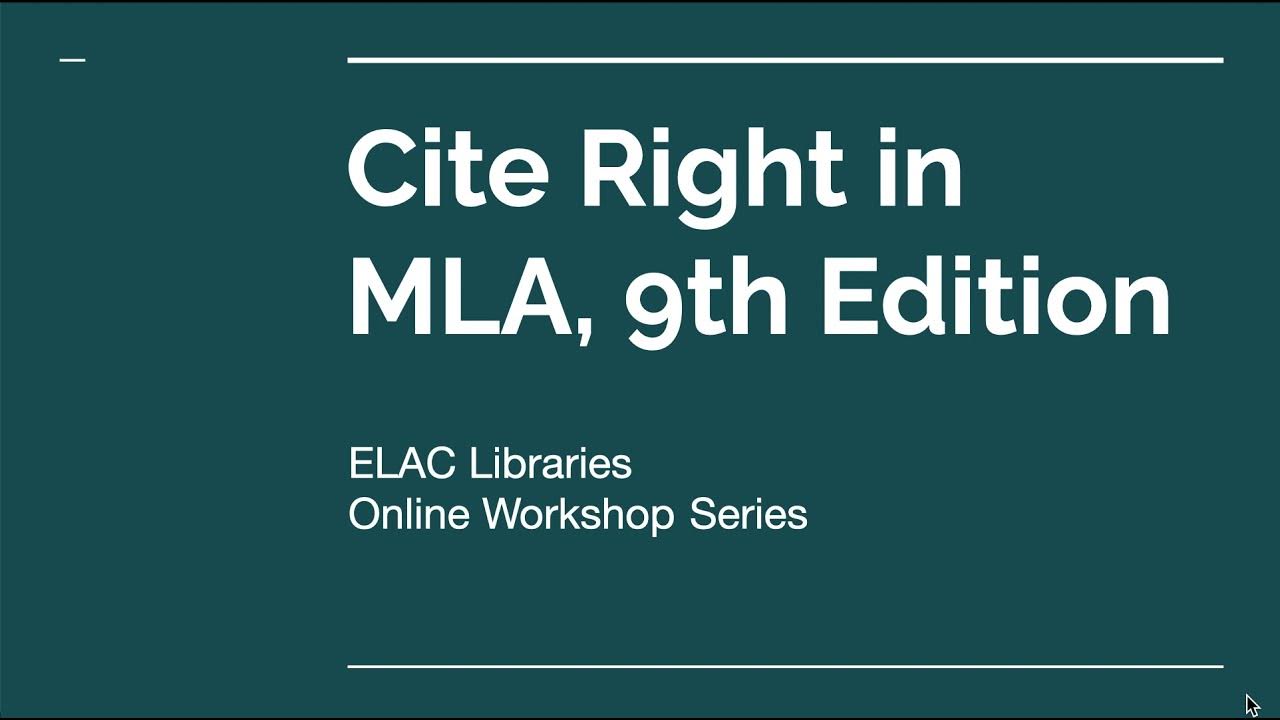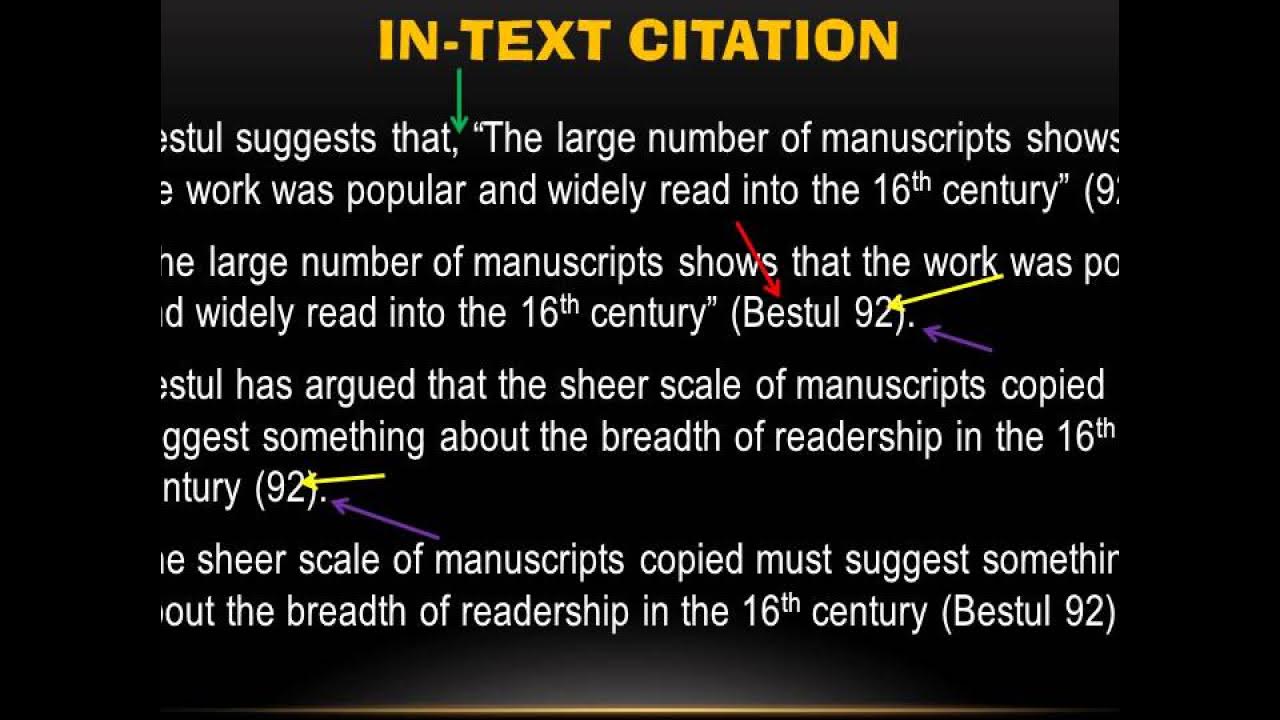MLA Style: In-Text Citations (8th Ed., 2016)
Summary
TLDRThis video from Eliza Gellis in collaboration with Purdue OWL explains how to use MLA style in-text citations. It covers when to use citations, either when quoting directly or paraphrasing, and the correct format for different types of sources, including works with one author, multiple authors, or no author. It also discusses citing corporate authors and online sources, and how to include citations directly in the sentence using signal phrases. The video emphasizes ensuring that in-text citations match the first element in the corresponding Works Cited entry.
Takeaways
- 📚 MLA in-text citations are used to reference others' work within your writing by placing source information in parentheses.
- 📝 In-text citations are necessary when you directly quote someone or when you paraphrase their work.
- 👤 For author-page style citations, include the author's last name and the page number. If there is no page number, just the author's name will suffice.
- 🏢 For corporate authors, list the organization name and the page number, if applicable.
- 👥 For two authors, list both last names in the order they appear in the source.
- 👥 For three or more authors, use the first author's last name followed by 'et al.'
- 📖 When citing multiple works by the same author, use a shortened version of the title in the citation to specify the correct work.
- 🖇️ If there is no author, use a shortened version of the title in your citation.
- 🌐 For online sources without page numbers, simply include the author's name or the title of the source.
- 💡 Signaling in-text citation is when you integrate part or all of the citation into the sentence for a more fluid reading experience.
Q & A
What is an in-text citation in MLA style?
-An in-text citation in MLA style is a parenthetical reference placed at the end of a sentence to indicate that you are using information from another source.
When should you use an in-text citation?
-You should use an in-text citation when you directly quote someone or when you reference or paraphrase their work.
How do you cite a source using the author-page style?
-Use the author's last name followed by the page number. If there is no page number, just use the author's name.
How do you cite a source with a corporate author?
-Use the name of the organization followed by the page number if there is one.
How do you cite a source with two authors?
-List both last names in the order they appear in the source.
How do you cite a source with three or more authors?
-List the first author's last name and replace the other authors' last names with 'et al.'
What should you do if you are using more than one work by the same author?
-Use a shortened version of the title in your citation to specify which work you are citing.
How do you cite a source with no author?
-Use a shortened version of the title of the work.
How do you cite an online source without a page number?
-Just use the author's name or the title, as online sources often do not have page numbers.
What is a signaling in-text citation?
-A signaling in-text citation is when you incorporate all or part of the citation into the sentence itself, often including the author's name directly in the sentence.
Outlines

Dieser Bereich ist nur für Premium-Benutzer verfügbar. Bitte führen Sie ein Upgrade durch, um auf diesen Abschnitt zuzugreifen.
Upgrade durchführenMindmap

Dieser Bereich ist nur für Premium-Benutzer verfügbar. Bitte führen Sie ein Upgrade durch, um auf diesen Abschnitt zuzugreifen.
Upgrade durchführenKeywords

Dieser Bereich ist nur für Premium-Benutzer verfügbar. Bitte führen Sie ein Upgrade durch, um auf diesen Abschnitt zuzugreifen.
Upgrade durchführenHighlights

Dieser Bereich ist nur für Premium-Benutzer verfügbar. Bitte führen Sie ein Upgrade durch, um auf diesen Abschnitt zuzugreifen.
Upgrade durchführenTranscripts

Dieser Bereich ist nur für Premium-Benutzer verfügbar. Bitte führen Sie ein Upgrade durch, um auf diesen Abschnitt zuzugreifen.
Upgrade durchführen5.0 / 5 (0 votes)






